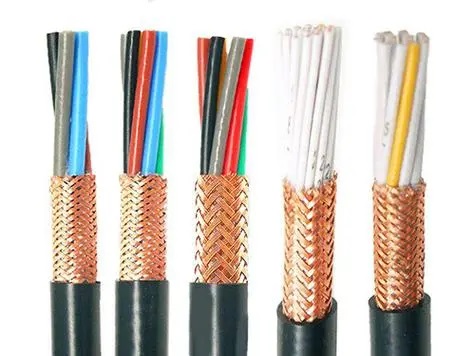Introduction
Shielded power cables play a crucial role in electrical systems by providing a safe and efficient means of transmitting power. These cables are designed with specialized shielding materials to protect against electromagnetic interference (EMI) and radio frequency interference (RFI), ensuring reliable power transmission and reducing the risk of electrical hazards. In this article, we will delve into the key features, benefits, applications, and installation considerations of shielded power cables, highlighting their importance in modern electrical infrastructure.
1. Understanding Shielded Power Cables
Shielded power cables are electrical cables that are constructed with an additional layer of shielding material to protect the conductors from external interference. The primary purpose of the shielding is to contain the electrical signals within the cable and prevent external electromagnetic fields from disrupting the transmission of power. Shielding can take various forms, including metallic foil, braided wire, or a combination of both, depending on the specific requirements of the application.
2. Types of Shielded Power Cables
There are several types of shielded power cables available in the market, each designed for specific applications and environmental conditions. Some common types of shielded power cables include:
- Shielded Twisted Pair (STP) cables: These cables consist of multiple insulated twisted pairs of wires, each encased in a protective shield. STP cables are commonly used in data communication systems to minimize crosstalk and interference.
- Shielded Multi-Conductor Cables: These cables contain multiple insulated conductors within a shielded jacket, providing protection against external interference in industrial and commercial applications.
- Armored Shielded Cables: These cables feature an additional layer of armor for enhanced mechanical protection in harsh environments such as underground installations or industrial settings.
- Shielded Flexible Cables: These cables are designed with flexible conductors and shielding for applications that require frequent bending and movement, such as robotics and automation systems.
3. Benefits of Shielded Power Cables
The use of shielded power cables offers several advantages over unshielded cables, making them a preferred choice for critical power transmission applications. Some key benefits of shielded power cables include:
- Enhanced Signal Integrity: Shielding helps to maintain signal integrity by reducing noise and interference, resulting in a more reliable and stable power transmission.
- Improved Safety: Shielded cables provide a higher level of protection against electrical hazards, reducing the risk of short circuits, electromagnetic radiation, and fires.
- EMI/RFI Protection: The shielding in power cables acts as a barrier to electromagnetic and radio frequency interference, ensuring that the transmitted signals remain unaffected by external sources.
- Durability: Shielded cables are more robust and durable compared to unshielded cables, making them suitable for demanding environments where mechanical stress or environmental factors may compromise the cable's integrity.
- Compliance: Shielded power cables are designed to meet industry standards and regulations for electrical safety and performance, ensuring compliance with building codes and regulations.
4. Applications of Shielded Power Cables
Shielded power cables find a wide range of applications across various industries and sectors where reliable power transmission is essential. Some common applications of shielded power cables include:
- Data Centers: Shielded cables are used in data centers to ensure high-speed and secure data transmission, minimizing the risk of data loss or corruption due to electromagnetic interference.
- Industrial Automation: Shielded cables play a critical role in industrial automation systems, providing reliable power supply and communication between control devices and machinery.
- Healthcare Facilities: Shielded power cables are employed in medical equipment and facilities to prevent electromagnetic interference that could affect the performance of sensitive medical devices.
- Telecommunications: Shielded cables are utilized in telecommunications networks to maintain signal integrity and minimize signal degradation over long distances.
- Renewable Energy Systems: Shielded power cables are essential components in solar power plants and wind farms, ensuring efficient power transmission from renewable energy sources to the grid.
5. Installation Considerations for Shielded Power Cables
Proper installation of shielded power cables is essential to maximize their performance and ensure long-term reliability. Some key considerations for installing shielded power cables include:

- Grounding: Proper grounding of the cable shields is crucial to dissipate any induced currents and prevent the accumulation of static charges that could damage the cable or connected equipment.
- Cable Routing: Avoid running shielded cables parallel to high-voltage lines or sources of electromagnetic interference to minimize the risk of signal distortion or interference.
- https://www.jiangyuancables.com : Keep shielded power cables separated from other cables and electrical equipment to prevent crosstalk and interference between different systems.
- Cable Termination: Use appropriate connectors and termination techniques to maintain the integrity of the shielding and ensure a secure connection between the cable and equipment.
- Testing and Maintenance: Regularly inspect and test shielded power cables for signs of wear, damage, or degradation to identify potential issues before they escalate and affect the performance of the electrical system.
Conclusion
Shielded power cables are indispensable components in modern electrical systems, providing a reliable and safe means of transmitting power while protecting against electromagnetic interference and ensuring signal integrity. By understanding the types, benefits, applications, and installation considerations of shielded power cables, electrical engineers and system designers can make informed decisions to enhance the performance and reliability of their electrical infrastructure. As technology continues to advance, the importance of shielded power cables in ensuring efficient and secure power transmission will only grow, making them an essential investment for any electrical system.
